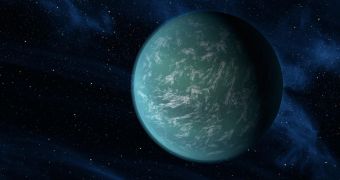European scientists have recently developed a new model that enables them to limit their radius when search for potentially-habitable extrasolar planets. Since billions of such worlds exist, it would be impractical to analyze all of them for potential signs of life.
The new research is meant to weed out dead ends, and allow astronomers to focus just on the most promising exoplanets.
The new habitable planet model was developed by scientists with the Center for Space and Habitability (CSH) at the University of Bern, in Switzerland, led by expert Yann Alibert. The tool he and his team developed limits the search for life exclusively to exoplanets that display Earth-like conditions.
When the NASA Kepler Space Telescope began sending back datasets containing thousands of exoplanets, space agencies around the world decided to start working on their own planet-hunting telescopes as well. ESA, for example, is developing the CHaracterising ExOPlanets Satellite (CHEOPS) mission.
“The question whether so-called exoplanets are habitable or not is difficult to answer, as we do not know all the necessary conditions a planet has to fulfill in order to be habitable,” Alibert says of this type of efforts. His new model is detailed in the latest issue of the journal Astronomy & Astrophysics.
The tool takes into account a wide variety of factors when it comes to establishing a planet's ability to support life, include mass, radius, distance from its parent star, temperature, atmosphere and so on.
However, the two most important factors, according to Alibert, are the presence of liquid water on the world's surface and the existence of a carbon cycle on the planet. According to the Bern researcher, these may very well be the most important aspects contributing to the development of life.
“Our study shows that a planet, that consists of a lot of gas or water, is not habitable,” he says. Likewise, chances are that gas giants, ice giants and exoplanets that are tidally-locked to their parent stars cannot support life either, Astrobiology Magazine reports.
Instruments such as CHEOPS and the HARPS spectrograph in Chile will help researchers detect such properties on every new world astronomers identify. “This theoretical model will help astronomers concentrate on promising candidates in their search for Earth-like planets,” Alibert concludes.

 14 DAY TRIAL //
14 DAY TRIAL //